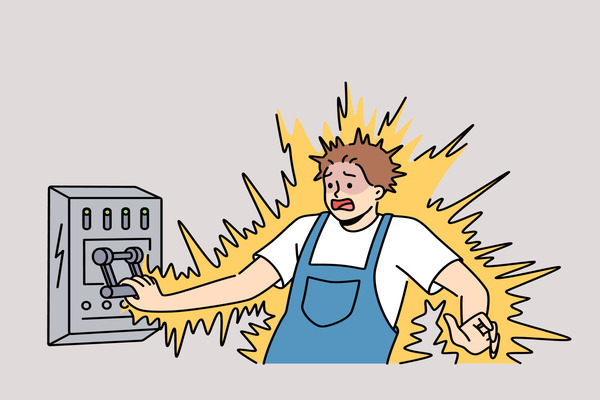What are regulations on electric safety for inspection of barriers, safety distances and earthing in Vietnam?
What are regulations on electric safety for inspection of barriers, safety distances and earthing in Vietnam?

What are regulations on electric safety for inspection of barriers, safety distances and earthing in Vietnam? - image from internet
Pursuant to Section 96 of the National Technical Regulation on electric safety issued together with the Circular 39/2020/TT-BCT in 2020 (effective from 01/06/2021) stipulating followiing regulations:
Barriers, safety distances and earthing
- High voltage zones inside test stations or laboratories should be isolated by barriers.
- The distance from the conductive part of the test equipment to the earthed fixed barrier shall not be less than the distance specified in the following tables:
+ For impulse voltage (amplitude value)
|
Voltage level (kV) |
Distance (m) |
|
From 01 to 100 |
0.5 |
|
From greater than 100 to 150 |
0.75 |
|
From greater than 150 to 400 |
1.0 |
|
From greater than 400 to 500 |
1.5 |
|
From greater than 500 to 1000 |
2.5 |
|
From greater than 1000 to 1500 |
4.0 |
|
From greater than 1500 to 2000 |
5.0 |
|
From greater than 2000 to 2500 |
6.0 |
+ For power frequency voltage, r.m.s. voltage and d.c.:
|
Voltage level (kV) |
Distance (m) |
|
From 01 to 6 |
0.1 |
|
From greater than 6 to 10 |
0.2 |
|
From greater than 10 to 20 |
0.3 |
|
From greater than 20 to 50 |
0.5 |
|
From greater than 50 to 100 |
1.0 |
|
From greater than 100 to 250 |
1.5 |
|
From greater than 250 to 400 |
2.5 |
|
From greater than 400 to 800 |
4.0 |
The distance to the temporary barrier must be twice the above value.
- The height of a fixed barrier must not be less than 1.7 m; the height of a temporary barrier must not be less than 1.2 m. The structure of the barrier must ensure that people cannot accidentally touch the live part.
- The door of a barrier must open outwards or be of the side swinging type. The door must be automatically locked and can open from the inside of the barrier without a key.
- It may not be necessary to lock the barrier at the test site located inside the test station in case of making sure that unauthorized persons cannot enter.
- A fixed barrier shall be constructed so that the only way to dismantle it is to use a wrench or special tool. Getting inside the barrier to inspect the transformer is permitted only when the casing of the transformer is grounded, and the distance from the lowest shed of the transformer insulators to the nearest part of a human body is not less than the value specified in the following table:
|
Voltage level (kV) |
Distance (m) |
|
From 01 to 10 |
1.5 |
|
From greater than 10 to 35 |
2.0 |
|
From greater than 35 to 110 |
2.5 |
- A transformer used for the insulation test requires a circuit breaker that automatically cuts off the power when the insulation is breached, and a resistor to reduce short-circuit currents.
- A capacitor and instrument transformer used in the test scheme that are installed outside the test ground should be barricaded.
- The following earthing actions are required: Frames, enclosures, bodies of objects to be tested and test equipment, portable test benches, handheld power tools, metal barriers, measuring instruments with metal casing must be earthed. If the metal casing of the measuring instrument cannot be grounded due to certain condition, a barrier shall be provided.
- In the diagram of a function generator and a cascade DC generator, a device must be set in place to automatically ground all capacitors when the power is cut off from the rectifiers.
- Equipment with large capacitance, if not included in the test scheme, but located in the test ground, shall be short-circuited and earthed.
- When testing products with large capacitance, such as capacitors and cables, devices used for short-connecting and short-circuiting the tested products to earth must be in place.
- At the end of the test, capacitors must be electrically discharged and earthed. When capacitors are connected in series, each capacitor must be electrically discharged. Electrical discharge must be discharged until all sparks are gone.
Best regards!










